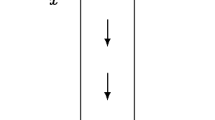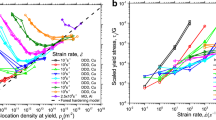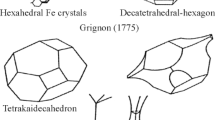Abstract
The Ph.D. work of Jan H. van der Merwe in 1949 established a new paradigm for the understanding of dislocation dynamics in restricted volumes. This led to a comprehensive understanding of plasticity, or strain relaxation, in the context of strained-layer semiconductor structures. However, this understanding was largely overlooked in the context of traditional metallurgy and micromechanics. We identify four reasons for this, the apparent need for an unstrained substrate in van der Merwe’s theory, the supposed inapplicability to strain gradients, the supposed inapplicability to the Hall–Petch effect (dependence of strength on the inverse square root of grain size), and an emphasis on understanding strain hardening rather than the yield point. Addressing these four points in particular, here it is shown how the insights of van der Merwe and of the earlier work by Lawrence Bragg lead to a coherent and unified view of the size-effect phenomena ranging from the Hall–Petch effect to the strain-gradient plasticity theory.


Similar content being viewed by others
References
V. Volterra: Sur l’équilibre des corps élastiques multiplement connexes. Ann. Sci. École Norm. Sup. 24, 401 (1907).
G.I. Taylor: The mechanism of plastic deformation of crystals. Part I. Theoretical. Proc. R. Soc. London, Ser. A 145, 362 (1934).
E. Orowan: Zur Kristallplastizität. III. Über den Mechanismus des Gleitvorganges. Z. Phys. 89, 634 (1934).
M. Polanyi: Über eine Art Gitterstörung, die einen Kristall plastisch machen könnte. Z. Phys. 89, 660 (1934).
F.C. Frank and J.H. van der Merwe: One-dimensional dislocations. II. Misfitting monolayers and oriented overgrowth. Proc. R. Soc. London, Ser. A 198, 216 (1949).
J.H. van der Merwe: Misfitting monolayers and oriented overgrowths. Discuss. Faraday Soc. 5, 201 (1949).
Y. Li, A.J. Bushby, and D.J. Dunstan: The Hall–Petch effect as a manifestation of the general size effect. Proc. R. Soc. A 472, 20150890 (2016).
W.L. Bragg: A theory of the strength of metals. Nature 149, 511 (1942).
E.O. Hall: The deformation and ageing of mild steel: III discussion of results. Proc. R. Soc. B 64, 747 (1951).
N.J. Petch: The cleavage strength of polycrystals. J. Iron Steel Inst. 174, 25 (1953).
A. Kelly: Lawrence Bragg’s interest in the deformation of metals and 1950–1953 in the Cavendish—A worm’s-eye view. Acta Crystallogr., Sect. A: Found. Crystallogr. 69, 16 (2013).
W.L. Bragg: The strength of metals. Math. Proc. Cambridge Philos. Soc. 45, 125 (1949).
D. Kuhlmann-Wilsdorf: The impact of F.R.N. Nabarro on the LEDS theory of workhardening. Prog. Mater. Sci. 54, 707 (2009).
J.W. Matthews and J.L. Crawford: Accomodation of misfit between single-crystal films of nickel and copper. Thin Solid Films 5, 187 (1970).
J.W. Matthews and W.A. Jesser: Experimental evidence for pseudomorphic growth of platinum on gold. Acta Metall. 15, 595 (1967).
J.W. Matthews and E. Klokholm: Fracture of brittle epitaxial films under the influence of misfit stress. Mater. Res. Bull. 7, 213 (1972).
J.W. Matthews and A.E. Blakeslee: Defects in epitaxial multilayers: I. Misfit dislocations. J. Cryst. Growth 27, 118 (1974).
Available at: http://www.manchester.ac.uk/discover/news/two-university-of-manchester-discoveries-in-the-top-ten-of-all-time (accessed March 31, 2017).
R. People and J.C. Bean: Calculation of critical layer thickness versus lattice mismatch for GexSi1−x/Si strained-layer heterostructures. Appl. Phys. Lett. 47, 322 (1985).
A.V. Drigo, A. Aydinli, A. Carnera, F. Genova, C. Rigo, C. Ferrari, P. Franzosi, and G. Salviati: On the mechanisms of strain release in molecular-beam-epitaxy-grown InxGa1−xAs/GaAs single heterostructures. J. Appl. Phys. 66, 1975 (1989).
D.J. Dunstan: Strain and strain relaxation in semiconductors. J. Mater. Sci.: Mater. Electron. 8, 337 (1997).
J.D. Eshelby, F.C. Frank, and F.R.N. Nabarro: The equilibrium of linear arrays of dislocations. Philos. Mag. 42, 351 (1951).
J.H. van der Merwe: Strains in crystalline overgrowths. Philos. Mag. 7, 1433 (1962).
D. Kuhlmann-Wilsdorf and J.H. van der Merwe: Theory of dislocation cell sizes in deformed metals. Mater. Sci. Eng. 55, 79 (1982).
W.D. Nix: Mechanical properties of thin films. Metall. Trans. A 20, 2217 (1989).
C.V. Thompson: The yield stress of polycrystalline thin films. J. Mater. Res. 8, 237 (1993).
W.C. Unwin: The Testing of Materials of Construction (Longmans, Green, and Co., London, 1888).
S.S. Brenner: Tensile strength of whiskers. J. Appl. Phys. 27, 1484 (1956).
M.D. Uchic, D.M. Dimiduk, J.N. Florando, and W.D. Nix: Sample dimensions influence strength and crystal plasticity. Science 305, 986 (2004).
S. Korte and W.J. Clegg: Discussion of the dependence of the effect of size on the yield stress in hard materials studied by microcompression of MgO. Philos. Mag. 91, 1150 (2010).
N.A. Fleck, G.M. Muller, M.F. Ashby, and J.W. Hutchinson: Strain gradient plasticity: Theory and experiment. Acta Metall. Mater. 42, 475 (1994).
J.S. Stölken and A.G. Evans: A microbend test method for measuring the plasticity length scale. Acta Mater. 46, 5109 (1998).
M.F. Ashby: The deformation of plastically non-homogeneous materials. Philos. Mag. 21, 399 (1970).
J.M.C. Li: Petch relation and grain boundary sources. Trans. TMS 227, 239 (1963).
H. Conrad: Effect of grain size on the lower yield and flow stress on iron and steel. Acta Metall. 11, 75 (1963).
X. Zhang and K. Aifantis: Interpreting the internal length scale in strain gradient plasticity. Rev. Adv. Mater. Sci. 41, 72 (2015).
W.D. Nix and H.J. Gao: Indentation size effects in crystalline materials: A law for strain gradient plasticity. J. Mech. Phys. Solids 46, 411 (1998).
A.G. Evans and J.W. Hutchinson: A critical assessment of theories of strain gradient plasticity. Acta Mater. 57, 1675 (2009).
R. Beanland: Dislocation multiplication mechanisms in low-misfit strained epitaxial layers. J. Appl. Phys. 77, 6217 (1995).
D.J. Dunstan, B. Ehrler, R. Bossis, S. Joly, K.M.Y. P’ng, and A.J. Bushby: Elastic limit and strain-hardening of thin wires in torsion. Phys. Rev. Lett. 103, 155501 (2009).
Z.W. Shan, R.K. Mishra, S.A. Syed Asif, O.L. Warren, and A.M. Minor: Mechanical annealing and source-limited deformation in submicrometre-diameter Ni crystals. Nat. Mater. 7, 115 (2007).
J.R. Greer and W.D. Nix: Nanoscale gold pillars strengthened through dislocation starvation. Phys. Rev. B 73, 245410 (2006).
J. Tersoff: Dislocations and strain relief in compositionally graded layers. Appl. Phys. Lett. 62, 693 (1993).
C. Motz and D.J. Dunstan: Observation of the critical thickness phenomenon in dislocation dynamics simulation of microbeam bending. Acta Mater. 60, 1603 (2012).
N.A. Fleck and J.W. Hutchinson: A phenomenological theory for strain gradient effects in plasticity. J. Mech. Phys. Solids 41, 1825 (1993).
E.C. Aifantis: The physics of plastic deformation. Int. J. Plast. 3, 211 (1987).
D.J. Dunstan: Validation of a phenomenological strain-gradient plasticity theory. Philos. Mag. Lett. 96, 305 (2016).
D. Liu and D.J. Dunstan: Material length scale of strain gradient plasticity: A physical interpretation. Int. J. Plast. (2017). (in press).
D.J. Dunstan and A.J. Bushby: The scaling exponent in the size effect of small scale plastic deformation. Int. J. Plast. 40, 152 (2013).
W.M. Baldwin: Yield strength of metals as a function of grain size. Acta Metall. 6, 139 (1958).
J.W. Aldrich and R.W. Armstrong: The grain size dependence of the yield, flow and fracture stress of commercial purity silver. Metall. Trans. 1, 2547 (1970).
D.J. Dunstan and A.J. Bushby: Grain size dependence of the strength of metals: The Hall–Petch effect does not scale as the inverse square root of grain size. Int. J. Plast. 53, 56 (2014).
Y. Li, A.J. Bushby, and D.J. Dunstan: Quantitative explanation of the reported values of the Hall–Petch parameter. (unpublished).
S.B. Nissen, T. Magidson, K. Gross, and C.T. Bergstrom: Publication bias and the canonization of false facts. eLife 5, e21451 (2016).
T. Narutani and J. Takamura: Grain-size strengthening in terms of dislocation density measured by resistivity. Acta Metall. Mater. 39, 2037 (1991).
L.M. Brown: Indentation size effect and the Hall–Petch ‘law’. Mater. Sci. Forum 662, 13 (2011).
A.S. Argon: Strengthening Mechanisms in Crystal Plasticity (Oxford University Press, Oxford, U.K. 2008); ch. 8.8.
A.W.F. Edwards: Likelihood (Cambridge University Press, 1972; John Hopkins University Press, Baltimore, 1992).
D. Dong, D.J. Dunstan, and A.J. Bushby: Plasticity and thermal recovery of thin copper wires in torsion. Philos. Mag. 95, 1739 (2015).
M. Walter and O. Kraft: A new method to measure torsion moments on small-scaled specimens. Rev. Sci. Instrum. 82, 035109 (2011).
D. Liu, Y. He, D.J. Dunstan, B. Zhang, Z. Gan, P. Hu, and H. Ding: Anomalous plasticity in the cyclic torsion of micron scale metallic wires. Phys. Rev. Lett. 110, 244301 (2013).
B. Ehrler, X.D. Hou, T.T. Zhu, K.M.Y. P’ng, C.J. Walker, A.J. Bushby, and D.J. Dunstan: Grain size and sample size interact to determine strength in a soft metal. Philos. Mag. 88, 3043 (2008).
R.M. Douthwaite: Relationship between the hardness, flow stress, and grain size of metals. J. Iron Steel Inst. 208, 265 (1970).
H. Bei, S. Shim, G.M. Pharr, and E.P. George: Effects of pre-strain on the compressive stress-strain response of Mo-alloy single-crystal micropillars. Acta Mater. 56, 4762 (2008).
J. Weiss, W. Ben Rhouma, T. Richeton, S. Dechanel, F. Louchet, and L. Truskinovsky: From mild to wild fluctuations in crystal plasticity. Phys. Rev. Lett. 114, 105504 (2015).
C.R. Weinberger and W. Cai: Plasticity of metal wires in torsion: Molecular dynamics and dislocation dynamics simulations. J. Mech. Phys. Solids 58, 1011 (2010).
M.E. Brenchley, M. Hopkinson, A. Kelly, P. Kidd, and D.J. Dunstan: Coherency strain as an athermal strengthening mechanism. Phys. Rev. Lett. 78, 3912 (1997).
F. Kümmel, M. Kreuz, T. Hausöl, H.W. Höppel, and M. Göken: Microstructure and mechanical properties of accumulative roll-bonded AA1050A/AA5005 laminated metal composites. Metals 6, 56 (2016).
R.O. Ritchie: The conflicts between strength and toughness. Nat. Mater. 10, 817 (2011).
W.P. Gillin, D.J. Dunstan, K.P. Homewood, L.K. Howard, and B.J. Sealy: Interdiffusion in InGaAs/GaAs quantum well structures as a function of depth. J. Appl. Phys. 73, 3782 (1993).
ACKNOWLEDGMENTS
I am indebted to too many collaborators, co-authors and colleagues to acknowledge them all by name, but particular mention must be made of Andy Bushby and the late Tony Kelly, responsible for shifting my interest from semiconductors to include metals, and of Ron Armstrong, Mick Brown, Bill Nix, and the late Tony Evans, whose friendly interest and knowledge of the field has been indispensable whether or not they agree with my conclusions.
Author information
Authors and Affiliations
Corresponding author
Rights and permissions
About this article
Cite this article
Dunstan, D.J. The size effect in the mechanical strength of semiconductors and metals: Strain relaxation by dislocation-mediated plastic deformation. Journal of Materials Research 32, 4041–4053 (2017). https://doi.org/10.1557/jmr.2017.300
Received:
Accepted:
Published:
Issue Date:
DOI: https://doi.org/10.1557/jmr.2017.300




